Be water safe this summer
Top tips on how to ensure that you and your child are water safe this summer
As we look forward to the summer holidays, it is time for an essential reminder about how to stay safe in and around the water. Sadly, accidental drowning is the third highest cause of death in youngsters. This Blog contains links to some great resources and an outline of the key points to remember...
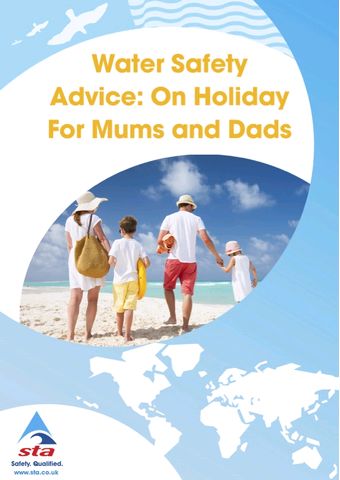 A great NEW water safety holiday advice leaflet for parents and guardians from the STA, free to download. Click here to download your copy
A great NEW water safety holiday advice leaflet for parents and guardians from the STA, free to download. Click here to download your copy
And here's a great little animation to watch with your children: Learn the SAFE Code with Perry and the Bouys
Here are some top water safety tips for you to help keep you and your children safe this summer:
1. Spot the dangers
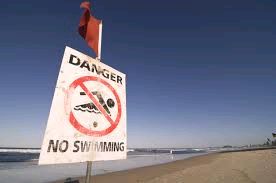 When you arrive on holiday - or on your day trip - do a check of the area and look for dangers in and around the water.
When you arrive on holiday - or on your day trip - do a check of the area and look for dangers in and around the water.
- What are the general conditions like in and out of the water?
- Check the tides before you swim and make sure you won’t get cut off from the beach by the rising tides.
- Are there rocks, piers, or break-waters that may affect paddling and bathing?
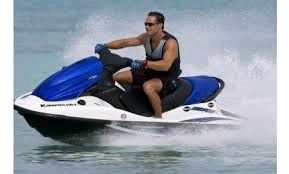 - Are there any water sports taking place, such as water-skiing? If so, are these in zoned areas?
- Are there any water sports taking place, such as water-skiing? If so, are these in zoned areas?
Safety at home is important too – ensure that paddling pools and buckets are emptied.
2. Go together
Remember: Don't swim alone!
Ensure children are supervised AT ALL TIMES and swim at life-guarded pools and beaches where possible.
3. Take safety advice
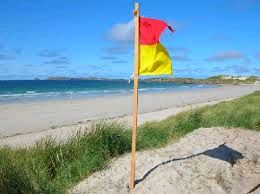 Take notice of warning signs. If abroad, water safety signage can be different so find out what local warning flags and signs mean
Take notice of warning signs. If abroad, water safety signage can be different so find out what local warning flags and signs mean
Ross from the RNLI provides great tips on staying safe at the beach – watch this short clip
Make sure your child wears a life jacket on boating trips.
Your child could quickly and easily be blown out to sea on a large inflatable toy – try to discourage their use.
4. Learn how to help
Do not enter the water to rescue anyone.
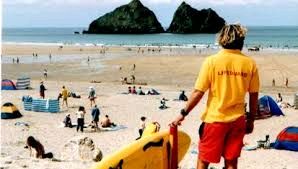 Learn how to get help in an emergency: If you see someone in difficulty, tell somebody, preferably a Lifeguard if there is one nearby, or go to the nearest telephone, dial 999, ask for the Police at inland water sites and the Coastguard at the beach.
Learn how to get help in an emergency: If you see someone in difficulty, tell somebody, preferably a Lifeguard if there is one nearby, or go to the nearest telephone, dial 999, ask for the Police at inland water sites and the Coastguard at the beach.
You can find out about rescue methods here.
Teach your children the importance of water safety
 All children swimming with Water Lilies Swimming School are part way to being safe in the water as they are learning to swim and being taught water safety as part of their lessons. At WLSS we follow the STA’s Learn to Swim programe. However they need your help too – to teach them the importance of water safety.
All children swimming with Water Lilies Swimming School are part way to being safe in the water as they are learning to swim and being taught water safety as part of their lessons. At WLSS we follow the STA’s Learn to Swim programe. However they need your help too – to teach them the importance of water safety.
10 Top Tips for having a safe holiday aroad this summer - from the STA:
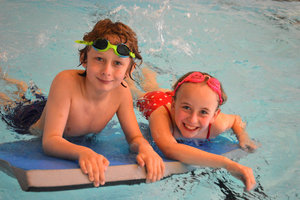
Summer has officially arrived and many millions of British holidaymakers are preparing to depart to foreign shores in search of the elusive suntan, which means long days by the pool or on the beach. Inevitably many accidents occur when simple safety rules are ignored or forgotten in the heat of the noon-day sun. So we’ve compiled 10 simple water safety reminders for people intending to ‘chill’ by the pool or on the beach this summer.
-
Young children are attracted to water. On arrival, inspect the location for potential hazards – it is not uncommon for a drowning to occur while both parents have been unloading the car or unpacking upon arrival. Don’t take your eyes off them for even one second if they are near water. Parents / Guardians should take turns to keep their eye on children who are in the swimming pool even if they are in floatation devices and can stand up.
- Never accept the validity of pool depth markings – they are often wrong or misleading. Get someone to test the depth before allowing weak or non-swimmers near the pool.
-
If the clarity of the pool is so poor that you can’t see the bottom, then stay out of the water.
-
Drains and water inlets can trap fingers and hair. Point these out to children so that they understand the danger.
-
If the children’s pool is adjacent to the main pool, weak and non-swimmers should be deterred from changing pools or using the dividing walls / features to walk on.
-
Weak and non-swimmers should not go out of their depth – even when they are using armbands and other floatation devices.
-
At the beach, never play or swim near rocks, or near boats or other crafts.
-
On the continent a ‘Red for Danger’ or ‘Yellow for Caution’ and a ‘Green Safe to Swim’ flag system is used, but often a bit on the liberal side. It’s better to be safe and swim only when the ‘Green’ flag is showing.
-
Always swim parallel to the shore rather than out to sea – and stay within your depth.
-
Don’t take lilos and other inflatables into the water – they can blow you out to sea and they may ‘pop’.
Safety near water is everyone’s responsibility. Following the above advice will help you to enjoy a safe holiday.
www.sta.co.uk
Find out more about the Water Safety Code
 Find out more about the Water Safey Code on the RoSPA website.
Find out more about the Water Safey Code on the RoSPA website.
Why not test your knowledge together with RoSPA's Water Wise Quiz and look through RoSPA's water safety information sheets.
 The RNLI has a new website for 7 - 14 year olds called Shorething! with games and activities, visit the website here
The RNLI has a new website for 7 - 14 year olds called Shorething! with games and activities, visit the website here
 We are introducing the STA Junior Lifeguard Academy next term - this is the STA's premier survival and rescue programme for children aged 8 years and above. More details coming soon! If you woudl like to register you interest, please contact the office on 01379 740489 or email treacle@waterliliesswim.co.uk
We are introducing the STA Junior Lifeguard Academy next term - this is the STA's premier survival and rescue programme for children aged 8 years and above. More details coming soon! If you woudl like to register you interest, please contact the office on 01379 740489 or email treacle@waterliliesswim.co.uk
Filed Under: All Categories


 A great NEW water safety holiday advice leaflet for parents and guardians from the STA, free to download.
A great NEW water safety holiday advice leaflet for parents and guardians from the STA, free to download.  When you arrive on holiday - or on your day trip - do a check of the area and look for dangers in and around the water.
When you arrive on holiday - or on your day trip - do a check of the area and look for dangers in and around the water. - Are there any water sports taking place, such as water-skiing? If so, are these in zoned areas?
- Are there any water sports taking place, such as water-skiing? If so, are these in zoned areas? Take notice of warning signs. If abroad, water safety signage can be different so find out what local warning flags and signs mean
Take notice of warning signs. If abroad, water safety signage can be different so find out what local warning flags and signs mean Learn how to get help in an emergency: If you see someone in difficulty, tell somebody, preferably a Lifeguard if there is one nearby, or go to the nearest telephone, dial 999, ask for the Police at inland water sites and the Coastguard at the beach.
Learn how to get help in an emergency: If you see someone in difficulty, tell somebody, preferably a Lifeguard if there is one nearby, or go to the nearest telephone, dial 999, ask for the Police at inland water sites and the Coastguard at the beach. All children swimming with Water Lilies Swimming School are part way to being safe in the water as they are learning to swim and being taught water safety as part of their lessons. At WLSS we follow the STA’s Learn to Swim programe. However they need your help too – to teach them the importance of water safety.
All children swimming with Water Lilies Swimming School are part way to being safe in the water as they are learning to swim and being taught water safety as part of their lessons. At WLSS we follow the STA’s Learn to Swim programe. However they need your help too – to teach them the importance of water safety. Find out more about the Water Safey Code on the RoSPA website.
Find out more about the Water Safey Code on the RoSPA website. The RNLI has a new website for 7 - 14 year olds called Shorething! with games and activities,
The RNLI has a new website for 7 - 14 year olds called Shorething! with games and activities, 